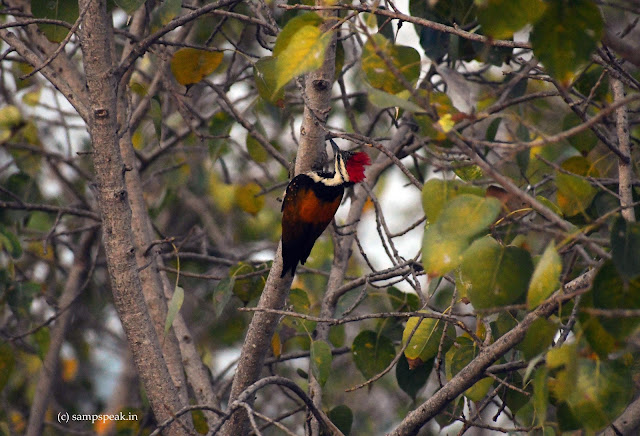Birders
spotted 236 species of birds in the 10th edition of Coimbatore Bird Race, the
Coimbatore chapter of HSBC-India Bird Race, which was held on Sunday.A total of
26 teams of bird watchers took part in the dawn-to-dusk event, spending an
entire day spotting and identifying birds to record as many species as
possible.
For long I
could only differentiate between a ‘Crow and sparrow’ – now I am seeing Mynahs,
Pigeons, Vultures, Parrots, Woodpeckers, and few other tinytots on my terrace
!!
Birdwatching, the observing of birds, is indeed interesting. You might spot an odd
one with naked eye but more difficult to capture them with a camera. As you stand in the early hours of morning,
there would be so much of interesting sounds of various birds that attract ..
.. that is for common man. Ornithology
is a branch of zoology that concerns the "methodological study and
consequent knowledge of birds with all that relates to them." Several
aspects of ornithology differ from related disciplines, due partly to the high
visibility and the aesthetic appeal of birds. They study various aspects of
bird life - evolution, behaviour, food habits, migration, mating patterns, and
more.
This morning saw a
beautiful bird that resembled a woodpecker and because of its colour wrote it
as - Red-crested
woodpecker !! - not to be, friend
Sundaraparipooranan nambi corrected it to be : Black-rumped Flameback.
Woodpeckers are part of
the family Picidae, which also includes the piculets, wrynecks, and sapsuckers.
Members of this family are found worldwide, except Australia, New Guinea, New Zealand,
Madagascar, and the extreme polar regions. Most species live in forests or
woodland habitats, although a few species are known that live in treeless
areas, such as rocky hillsides and deserts, and the Gila woodpecker specialises
in exploiting cacti.Members of this family are chiefly known for their
characteristic behaviour. They mostly forage for insect prey on the trunks and
branches of trees, and often communicate by drumming with their beaks,
producing a reverberatory sound that can be heard at some distance.
The black-rumped flameback (Dinopium benghalense), also known as the lesser golden-backed woodpecker or lesser goldenback, is a woodpecker found widely distributed in the Indian subcontinent. It is one of the few woodpeckers that are seen in urban areas. It has a characteristic rattling-whinnying call and an undulating flight. It is the only golden-backed woodpecker with a black throat and a black rump.
The black-rumped flameback
is a large species at 26–29 cm in length. It has a typical woodpecker shape,
and the golden yellow wing coverts are distinctive. The rump is black and not red
as in the greater flameback. The underparts are white with dark chevron
markings. The black throat finely marked with white immediately separates it
from other golden backed woodpeckers in the Indian region. Like other
woodpeckers, this species has a straight pointed bill, a stiff tail to provide
support against tree trunks, and zygodactyl feet, with two toes pointing
forward, and two backward
This flameback is found
mainly on the plains going up to an elevation of about 1200m in Pakistan, India
south of the Himalayas and east till the western Assam valley and Meghalaya,
Bangladesh and Sri Lanka. It is associated with open forest and cultivation.
They are often seen in urban areas with wooded avenues. They feed on insects mainly beetle larvae from
under the bark, visit termite mounds and sometimes feed on nectar.
Interesting !
With regards – S. Sampathkumar
2nd Mar 2022.


No comments:
Post a Comment